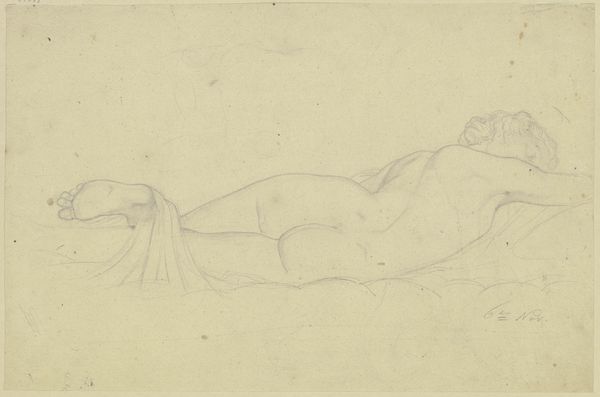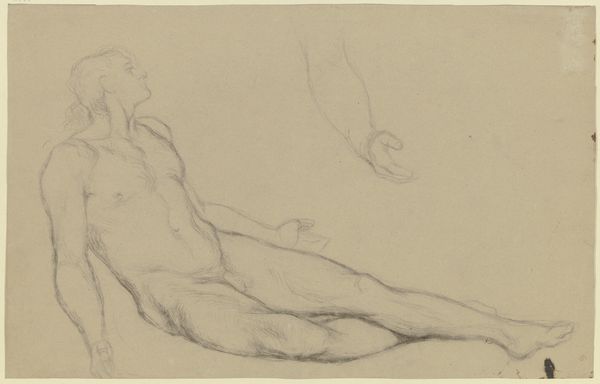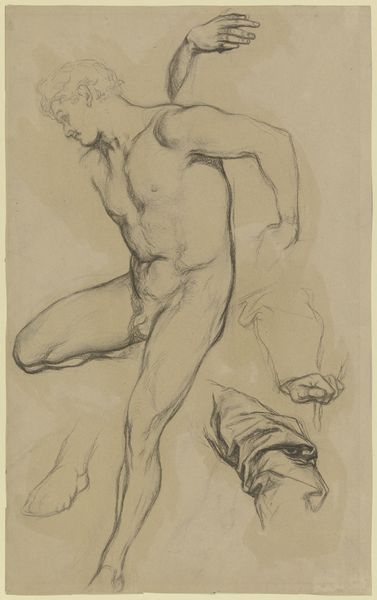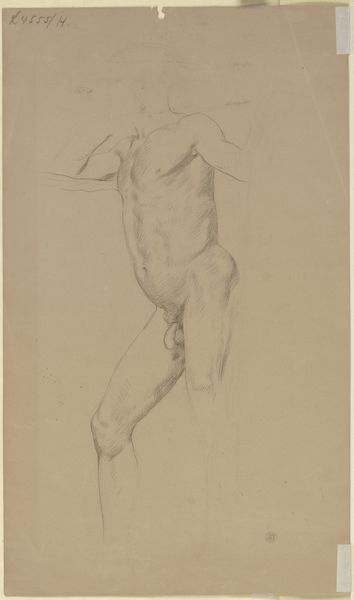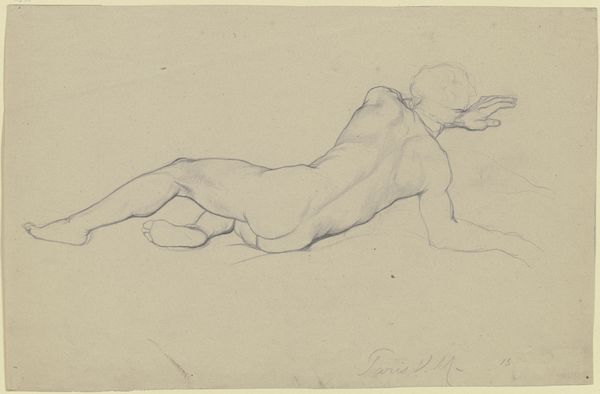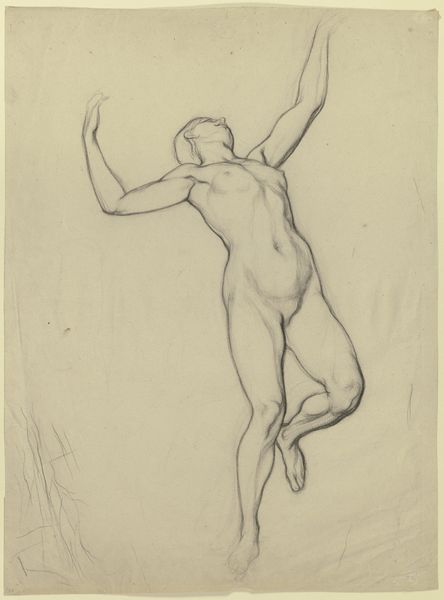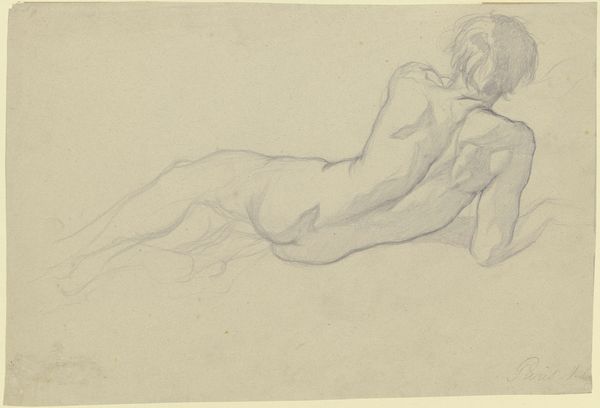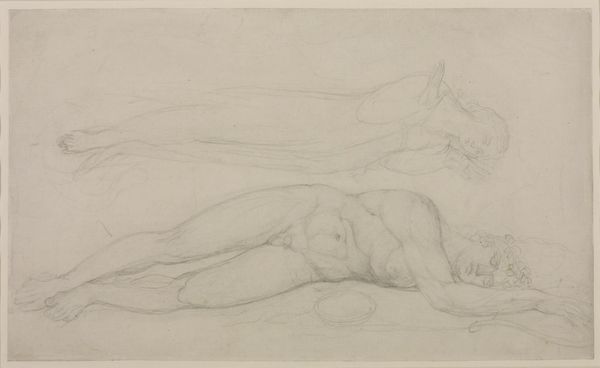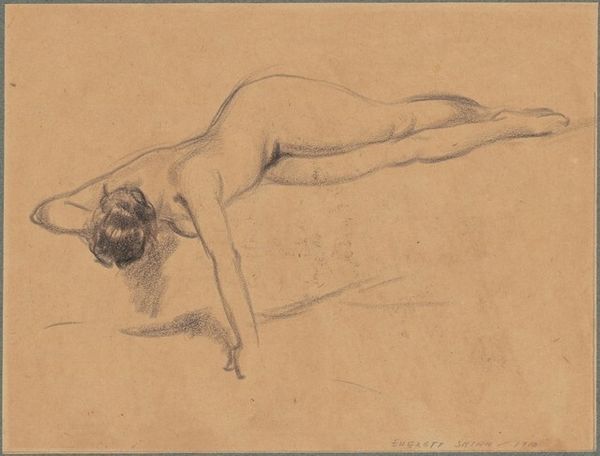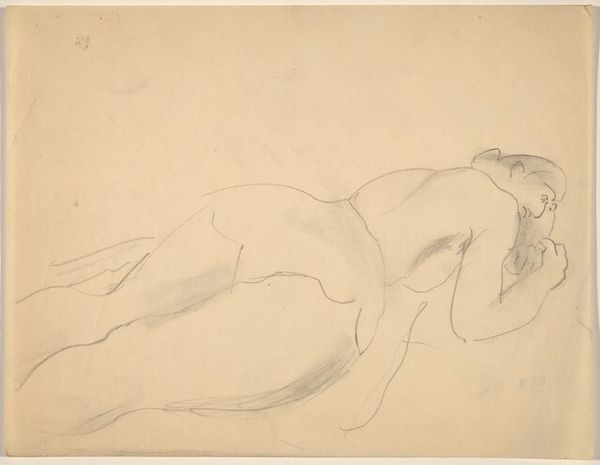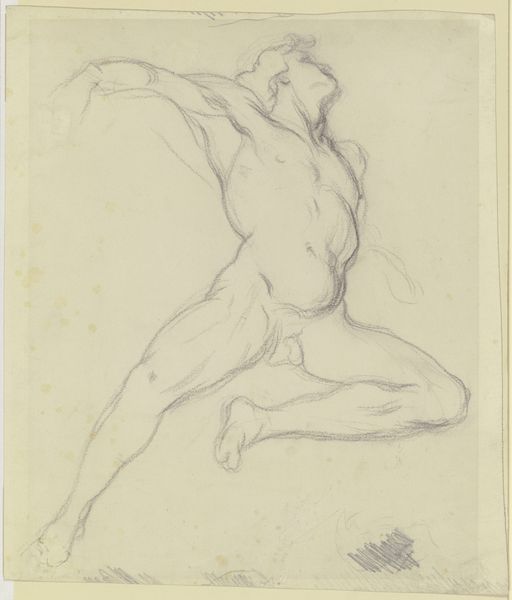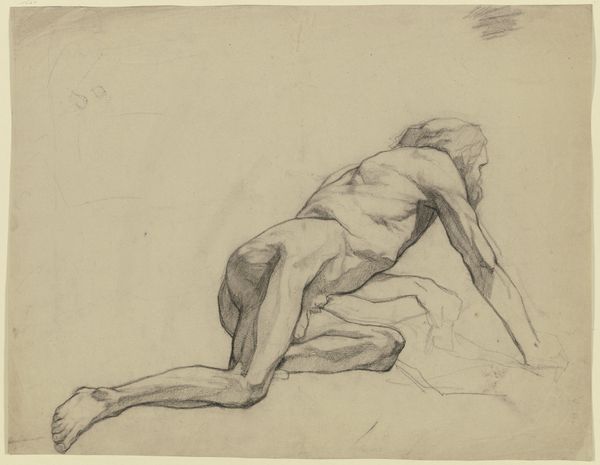
drawing, pencil
#
portrait
#
drawing
#
amateur sketch
#
light pencil work
#
pencil sketch
#
incomplete sketchy
#
charcoal drawing
#
figuration
#
pencil drawing
#
ink drawing experimentation
#
underpainting
#
pencil
#
portrait drawing
#
pencil work
#
academic-art
#
nude
#
realism
Dimensions: height 238 mm, width 315 mm
Copyright: Rijks Museum: Open Domain
Curator: This is "Studie van een liggende naakte man en draperie," a pencil drawing by Theodor Grosse, created sometime between 1839 and 1891. It resides here at the Rijksmuseum. Editor: My first impression is one of serene languor. The reclining nude seems to almost float, untethered, with the draped cloth mirroring the lines of the body, softening its starkness. Curator: I agree about the languor. Grosse's meticulous attention to the draping, its folds and shadows, speaks volumes about the academic process prevalent at the time. He really concentrates on mastering the technical skill involved in capturing texture. It points to the training and labour behind creating convincing images. Editor: Absolutely. I see echoes of classical depictions of fallen heroes, figures in repose after a great battle. It's interesting to consider what "heroism" means here – is it about physical prowess, or something more symbolic? Perhaps the idealized human form represents something beyond the individual. Curator: The use of pencil as the primary medium here is also key. It indicates a study, an exercise – not necessarily a finished "art object" for the market, but part of a process of refining technique and skill, which itself could be seen as work. Editor: But the unfinished nature contributes so much to the symbolism, don't you think? The slight imprecision hints at dreams or mortality, maybe even both, considering the subject matter. We can read into his passive figure ideas about cultural ideals of manhood, beauty, and rest. Curator: That reading certainly gives us a lot to consider about what it may tell us about societal structures surrounding the production of this work and the artistic market. But it could simply be artistic pragmatism dictating a more utilitarian focus, on training an artisan through an exercise in skill rather than selling a valuable commodity to collectors. Editor: Both possibilities definitely contribute layers to the meaning we extract from the drawing today. Curator: Indeed, understanding this drawing as the record of learned labour adds significant perspective. Editor: Yes, this lens certainly opens up a fascinating way of interpreting even seemingly conventional iconography.
Comments
No comments
Be the first to comment and join the conversation on the ultimate creative platform.
